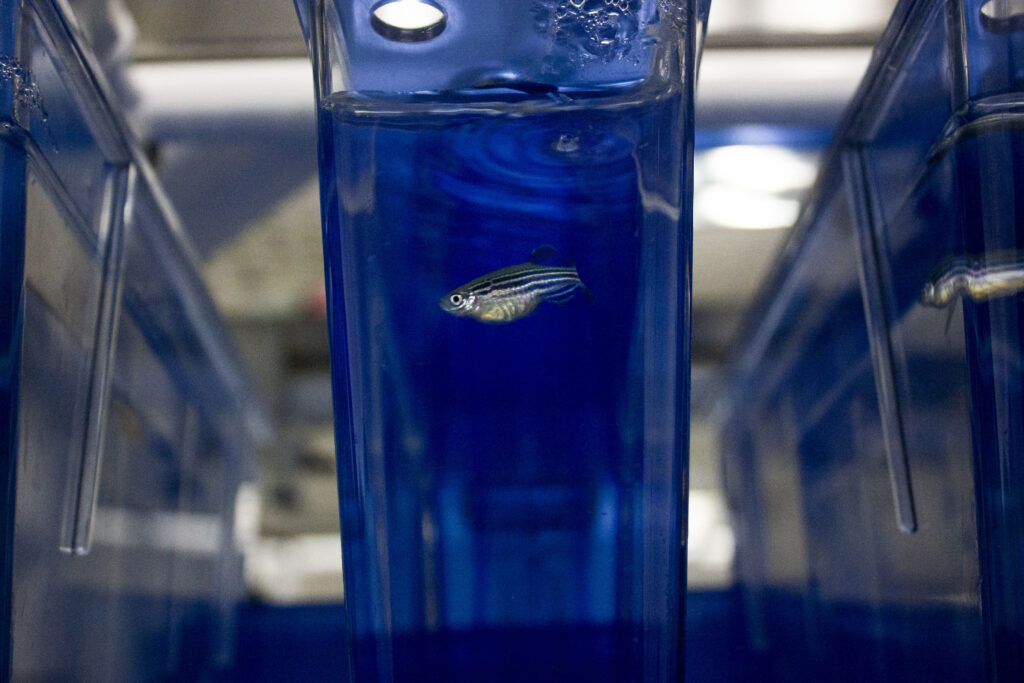The Kauppi Campus is bustling with rodents, fish, and flies – Animal testing hasn’t disappeared anywhere
Animal tests done at Tampere University have changed to more regulated ones from the monkey times. The future goal is to replace animals altogether, but there is still some way to go.
Original text: Otto Rantanen
Pictures: Aliina Ruuttunen
Translation: Isabel Lehtikallio

Kauppi Campus is bustling with mice and rats. The effect is equivalent to observing ants: first, you see one, then another, and then your vision is riddled with them.
Fortunately, the rodents are not roaming freely, but in the so-called animal barns in the bottom floor laboratories of Arvo. Arrival to the space has happened through a shower stall removing additional particles with air and gearing up to Breaking Bad spirited overalls.
The rodents live in cages organised after a block of flats. Some have coloured spots on their backs to ease identification. Head of the laboratory Brian Mphande seems satisfied when peeking through the plastic walls to the stalls, where up to five mice live in a shared flat, being the social animals they are.
“There’s still some room in the hotel”, he chuckles.
Hundreds of rodents
“Animal testing has its place in the 2020s and most definitely in the 2030s”, says Tampere University’s Faculty of Medicine and Health Technology’s Dean Seppo Parkkila.
Animal testing is carried out in his faculty. Less than in the past, but still as an important part of the daily life. It may sound extreme to a layperson.
Animal testing has held a central role in the development of science. Launching it in the 19th century had its part in dissipating superstitions related to the human body. Significant biomedicine and medicine breakthroughs were achieved in the 20th century thanks to animal testing.
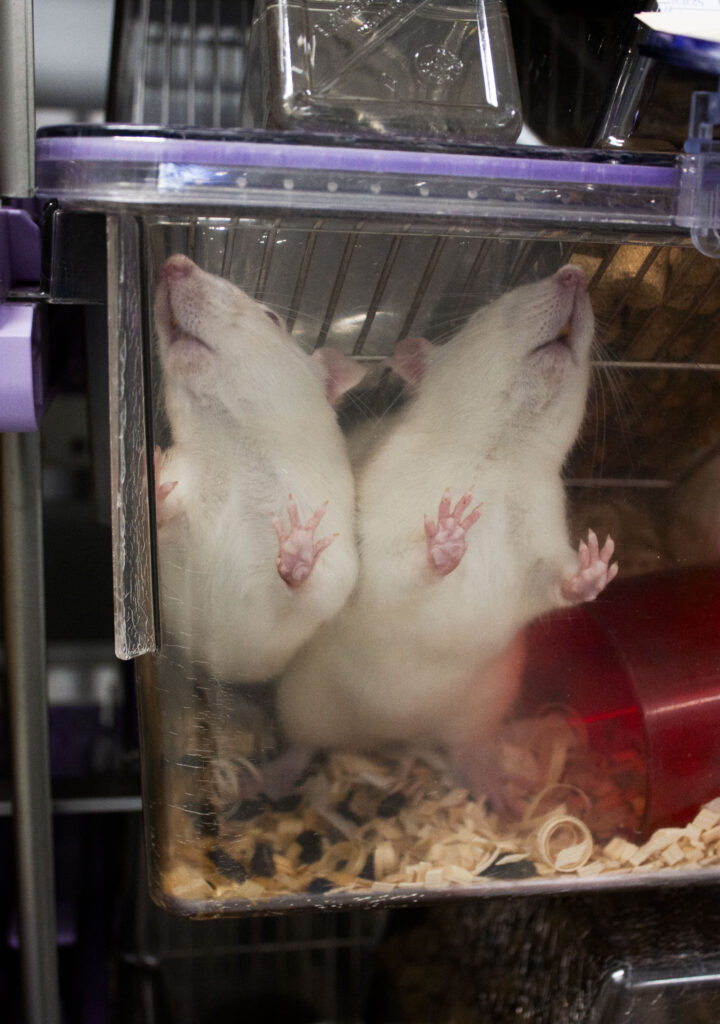
As science has advanced, animal testing has also yielded more fruitful results. Parkkila reflects on the change of the millennium during his nearly 40-year career. It was during this time that specific genes were removed from mouse embryos, and the effects of the absence of the protein produced by these cells were observed. These tests have served as the foundation for the breakthroughs in biomedical and medical research.
Nowadays, about 2000 animals are used in Kauppi which in comparison is a small amount. According to Mphande’s estimate, at least the universities of Helsinki, Turku and Kuopio are bigger agencies in the field.
“Animals need stimuli, so they don’t get stressed. Stress affects test results negatively”, he explains.
Paper, carton rolls, wood blocks and plastic tunnels have been placed as stimuli in the cages. The rats have their own playground where they get to go frolic occasionally. There is no scarcity of food either: the university orders one thousand kilograms of it in one sitting.
Each animal test requires precise ethical licensing, and each animal must serve its individual purpose. There are specimens of different colours, ages and sizes being used. Some are studied for their eyes, others for their intestines.
There are mice in four different rooms, rats are in one. The lights are on from seven am to seven pm in the laboratory, so that the animals stay on track of the time of the day. Additionally, the red window screens of the doors filter the sharp light of the hallway to fit the eyes of the rodents.
Mad monkey years
However, the goings at Tampere University have been wilder than it is now. Literally, because animal testing has also been conducted with monkeys in the laboratory.
Professor Kai Krohn’s (1936-2024) research team conducted the famous AIDS research for the most part in the 1990s.
“It proved to be significantly more challenging to get the monkeys to Finland and Tampere, than developing the vaccine virus itself!” Krohn writes in his memoir.
Finally help came from Stockholm, where the research team brought ten cynomolgus species’ monkeys to Tampere in the late 1980s, after an extensive bureaucratic paper war.
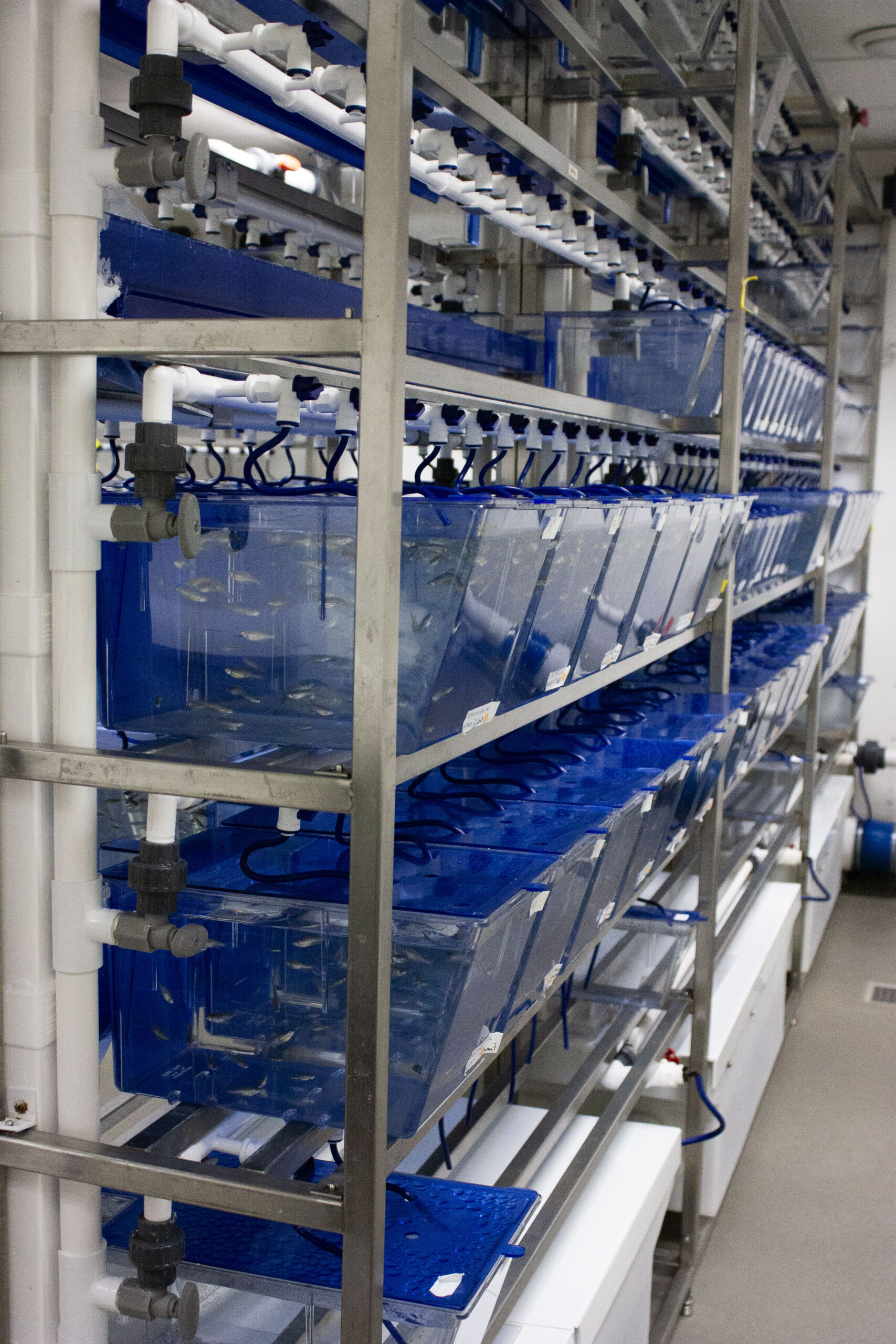
In the research, singular monkeys were given a purified and thus extremely aggressive HI-virus. This virus was a hundred times more potent than would have been needed to infect half the monkeys.
The HIV vaccination was developed with the help of the monkeys still in the beginning of the 2000s. Final vaccination still has not been prepared on a global scale, but the achieved test results in Tampere may end up as part of the vaccination when its time comes.
Although primates have disappeared from Tampere’s test animal cages, they are still used in research. According to the Oikeutta eläimille (Justice for animals) organisation, a study released in 2020 included some medical researchers from Tampere.
In it, a vaccine developed against the enterovirus was first tested on mice and afterwards on five rhesus macaques. The monkey testing was conducted in Sweden, where the Nordic countries only monkey laboratory is located.
In another case, the eyes of a total of 26 crab-eating macaques were dissected by Tampere University’s research team studying eye diseases. The crab -eating macaques are an endangered species, and the monkey tests have been outsourced to Singapore.
Many are concerned about the ethics of animal testing. Therefore, it has become a trend in Finland and Europe to shift to simpler animals, thereby discarding mammals. There have been efforts to minimise the amount of testing done on rodents, and both as substitutes and alongside them, fruit flies, fish, and nematodes have been adopted. Regulations and licensing criteria have become stricter. According to dean Parkkila, the change has been significant in recent decades.
The European Union has passed a directive stating that test animals will be substituted immediately when it is scientifically possible. So far this has been unsuccessful. Parkkila reminds us that a blob of harvested cells on a petri dish is not a specimen that would have different types of tissue.
In addition, there is a certain worry in these circles related to Europe’s forerunner status.
“Here work is highly regulated. When animal testing is reduced here, there is a risk that the initiative moves to countries outside Europe”, Parkkila muses.
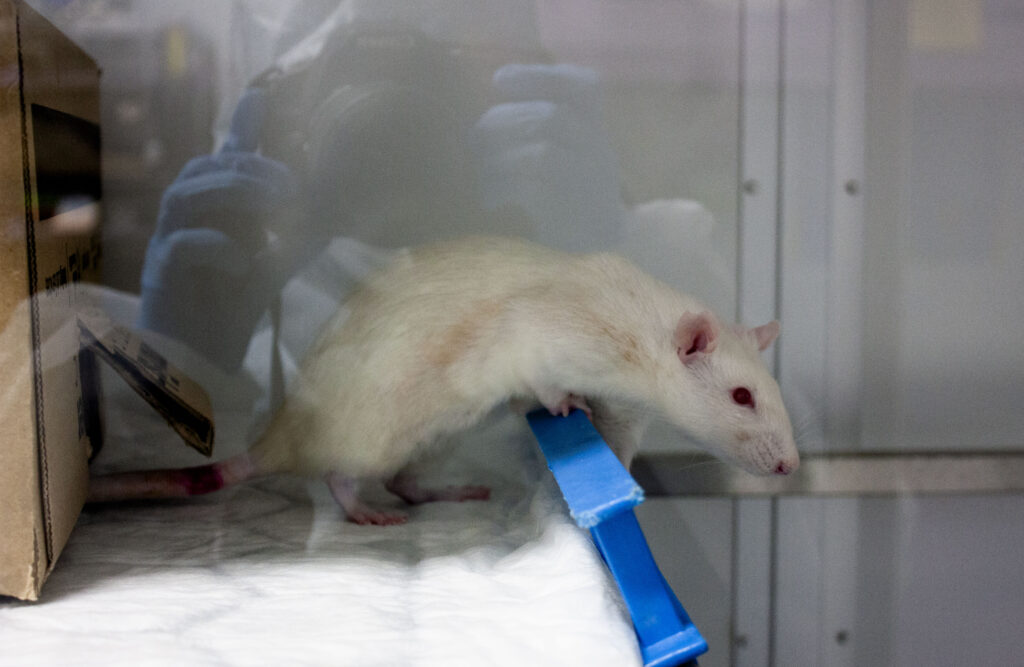
According to him, animal testing has been abandoned, and even BA or MA students studying in the biomedicine field do not necessarily come across them. An individual degree student may conduct animal testing for example in their thesis.
Then again if they want to be a researcher and use animals in their work, they must complete a course beforehand, where animal testing preparation can be learned. In addition to credits, the course gives a certificate following the EU directive to conduct the tests. A while back the course was named straightforwardly as Test animal course (5 ECTS).
Tropical fish in ice water
Behind the second door on the corridors of the animal garage is a more tropical environment compared to the rodent rooms. Here aquariums glow with warm air. Fruit flies on the other hand are studied behind the third door.
Laboratory specialist Leena Mäkinen who works with zebrafish, is presenting barely visible, teeny-tiny shrimp. They are dropped with a pipette to the fish tank, so the fish receive stimuli from hunting.
Currently, the fish are used to research, for example, leukaemia and tuberculosis. There are almost 10,000 fish at Tampere, allowing for a larger sampling than with expensive rodents when research calls for it.
A zebrafish produces hundreds of offspring per spawning time, and the eggs are translucent and ex utero alas easily observed. During spawning the fish are moved to a separate dish that is placed on a dark-coloured surface, leading the fish to believe to be at the bottom of a river or a lake.
Another good quality of the zebra fish is that it has one of the lowest neurophysiological developmental stages among test animals with vertebrates. There is no certainty of its level of pain reception, but the species is viewed as a more ethical test animal than rodents.
When a zebra fish is around a year and a half old, age starts weighing it and becomes more susceptible to infections. Although in nature the fish would at this point still have living years ahead of them, they are put down in the laboratory.
This is done by giving the fish an overdose of anaesthesia medication. A newer euthanizing method is to transfer the fish to ice water, which kills them instantly. However, the ice water method has not yet become a routine in Tampere.
Mäkinen stops to fix one aquarium’s lid back to its place.
“Sometimes the fish jump out of the tanks even through the feeding gap”, she smiles.
Artificial cells and artificial intelligence
Giving up animal testing is a twofold matter. This is how Tampere University’s Centre of Excellence in Body-on-a-Chip Research’s Postdoctoral Research Fellow Hanna Vuorenpää.
Many ineffective animal tests are conducted in the medical development field. There, 90 percent of medicines tested on mice do not end up working in humans, even when test results on mice have been positive. This is because of differences between mice and humans.
The European Union is currently planning to prohibiting testing medical and chemical compounds’ safety on animals. The regulation should be ready next year.
University-based research is different. Ready medicine and chemicals are not tested at universities but instead trying to find new solutions to biological issues. Thus, animal testing done by the university is looking for something that is yet unknown.
“The issue is already completely different so we cannot say a similar ineffectiveness percentage in the case of medicine testing”, Vuorenpää says.
There must always be a chosen model organism in research that acts as a human in the test. Currently, the decision is often an entire animal because the belief is that it is important to observe the entire being when conducting tests. If, for example, the liver is placed under stress, it is valuable to know how it affects the rest of the body.
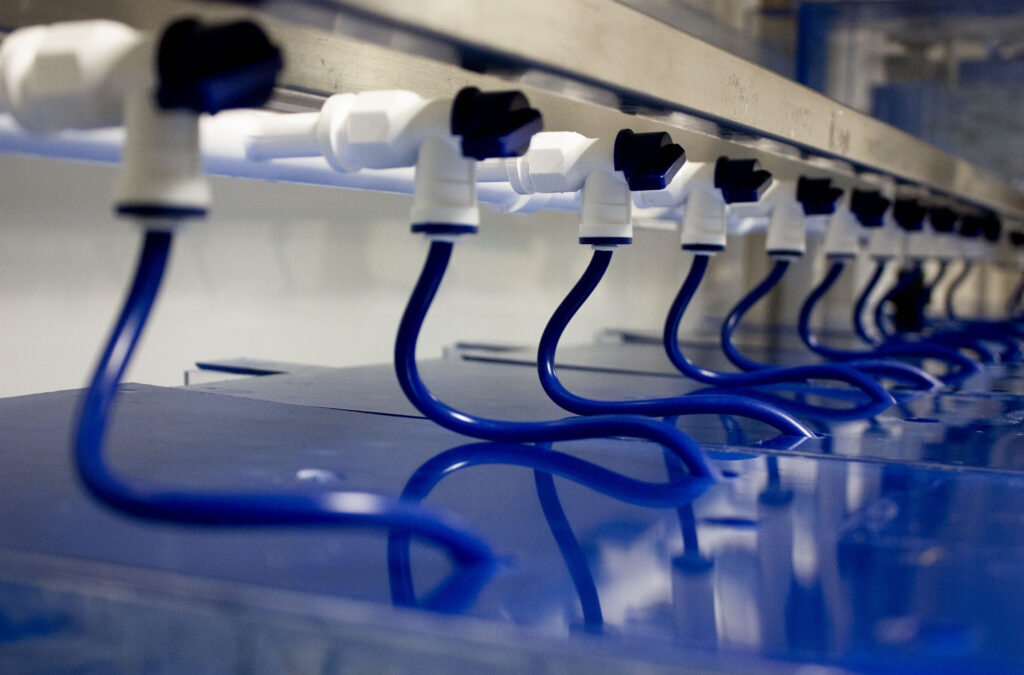
Substituting animal testing is on its way in the university community also. The six research groups within the Centre of Excellence in Body-on-a-Chip at Kauppi and Hervanta campuses are developing cell and tissue modules which could be used to replicate, for example, an entire heart muscle.
Additionally, the Finnish Hub of Development and Validation Integrated Approaches, or FHAIVE, is working in Tampere. It studies how giving up animal testing could be done with artificial intelligence and toxicogenomic solutions. Toxicogenomics mean the calculation of estimates of chemical safety done without animals.
According to Vuorenpää’s estimates, the substitution of animal testing has been underway for twenty years. The work has always advanced with other technological and biomedical developments and with their conditions.
First, we learned to isolate cells, then computer modules predicting chemical reactions were developed.
The next breakthrough could just well be right behind the corner of the animal barns.
This article has used Kai Krohn’s book “Oma ja vieras. Lääkäri ja tutkija muistelee” [ Own and guest. Doctor and researcher reminisces] (Recallmed, 2013) as a source.
